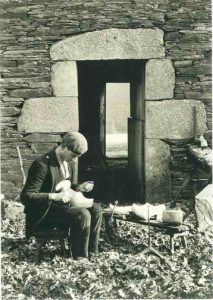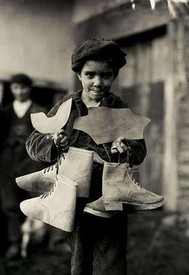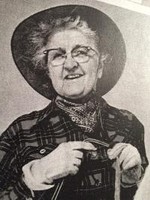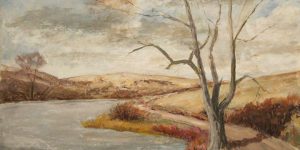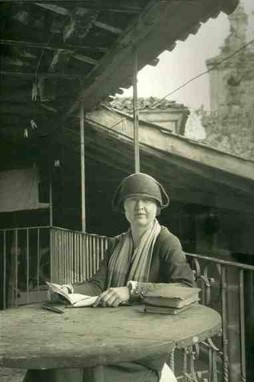
The article by Brian Murphy was entitled Angeles Florez Peon, memory keeper of Spanish Civil War, dies at 105. At nine years of age, she had left her job as a seamstress to join the guerillas fighting 1936-1939 against Franco and lived to be a major chronicler of the war.
Where does that lead us? In her recent One True Podcast for the Hemingway Society with Mark Cirino, historian Amanda Vaill discusses, among other things, the rise of photo-journalism, its first appearance in the Spanish Civil War, and how the Spanish Civil War got a world-wide audience through that photo-journalism.
And how does that get me back to Kearney? One of the major photographic records of Spain a century ago was comprised of the work of Ruth Anderson, one of the three daughters of the original Anderson Studio in Kearney, Nebraska.
Here is Will Stoutamire and Nathan Sislo’s account of those daughters, each of whom rose to international recognition, and one of whom, Mim, was known and loved by many of us.
Stoutamire and Sislo write ~
Ruth Matilda Anderson was an American photographer who traveled abroad in the 1920s to document Spanish culture. Ruth worked for the Hispanic Society of America. During her travels she took over 10,000 images of Spanish people, places and genre scenes such as people at work, doing chores, children playing, and holiday customs. Alfred accompanied Ruth on her first trip to Spain. They toured in a Ford, and also traveled by horses, boats and ‘on foot.’ Ruth focused on the study of Spanish costumes, making several more trips to Spain in search of related information and photographic images. In 1954, she was appointed Curator of Costumes of the Hispanic Society Museum and Library.
Miriam Anderson Worlock was described as a “Kearney woman who can sing, paint, take photographs, ride horses, climb mountains and is an expert at baking bread.” Miriam successfully pursued her talent for landscape and still life painting as well as ink drawing. She is the first Kearney artist to have her work included in the Nebraska Art Collection and some of her art is still held in the collections of the Museum of Nebraska Art in Kearney today.
Elizabeth Theodora Uldall was an American linguist and phonetician. Elizabeth taught at the University of Edinburgh in the United Kingdom. She produced some of the earliest video recordings of vibrating vocal folds, using herself as a subject. Elizabeth also worked on the intonation and rhythm of African languages.
All three sisters had pride in their hometown of Kearney, NE. Ruth, Miriam, and Elizabeth obtained many of the skills that they used to follow their passions in the arts from their parents, Alma Matilda -described as a “quiet, artistic” woman who liked to paint-and Alfred T. Anderson-a local photographer and an “energetic, talented man.” Miriam stayed in Kearney for the remainder of her life and taught Latin and Music while continuing to run the photography business. Later in their lives Elizabeth and Miriam stayed in Kearney NE. Ruth stayed in New York. All three are buried in the Kearney Cemetery.
Credit:
Kearney Creates is so indebted to Will and Nathan for rounding up the next generation story that stemmed from this famous frontier studio. If any viewer has a photo of Elizabeth, or any other photos of the three sisters or their work, you are welcome to send them to Keaney Creates and we will add them to the gallery or story line.
Chuck Peek, Editor
Reference:
Stoutamire, William and Nathaniel Syslo. “Anderson Sisters.” Clio: Your Guide to History. December 12, 2020. Accessed June 3, 2024. https://theclio.com/entry/121723
